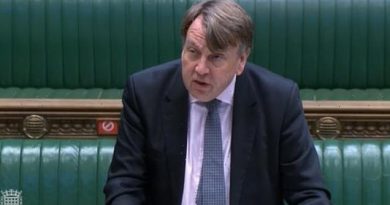Scientists reveal fresh insights about New Zealand’s 7.8 quake
Scientists have reconstructed 2016’s 7.8 Kaikōura Earthquake in unprecedented detail to reveal fascinating new insights about one of the most complex shakes observed anywhere in the world.
Kicking off near Culverden just after midnight on November 14, the two minute-long quake shook the country with the equivalent energy release of 400 atomic bombs and triggered a seismic ripple that set off more than 20 faults.
Nowhere was this domino effect more dramatic than along Marlborough’s Kekerengu Fault, which, in some places, appeared at the surface as raised-up folds of earth stretching across farmland.
Several years, tens of thousands of aftershocks, and nearly $2b of insurance claims later, scientists have been left with many lingering questions to answer.
Among them: precisely how the quake started, why it was that so many faults were involved and why the quake ended at Cape Campbell, 216km away from its epicentre in the heart of north Canterbury.
A yet more intriguing question was its potential link to our largest geological hazard – the huge tectonic plate boundary that is the Hikurangi Subduction Zone – and its interface deep beneath the northern South Island.
“All of these questions have received attention prior to our work, but they have not yet been conclusively solved,” said Dr Calum Chamberlain, a seismologist at Victoria University of Wellington and lead author of the study, just published in the journal JGR: Solid Earth.
It was the sheer complexity of faulting, he explained, that made the earthquake so difficult to understand, nearly five years later.
“Although we have an excellent understanding of what the faults look like at the surface, thanks to an incredible effort by New Zealand geologists, this mapping doesn’t directly tell us what is happening at depth – which is where most of the slip happens in earthquakes.”
After building a decade-long dataset of precise earthquake locations and magnitudes, the study team drew on a technique allowing them link known quakes with others that were so small they hadn’t been included in GeoNet’s catalogue.
They then computed accurate locations of each of the 33,328 quakes in their database between 2009 and 2020, and modelled the faulting style of 1,750 of these events.
“This provided the most detailed and complete view of faulting at depth beneath the faults that ruptured in the Kaikōura earthquake to date.”
As had earlier been suspected, they were able to confirm the event began as a simple slip of the Humps Fault, before propagating northward across the South Island, as well as out onto offshore thrust faults, which were likely the main source of an associated tsumani.
The Papatea Fault, unmapped before the quake and running along a similar path to the lower Clarence River in Marlborough, produced a 19km-long surface rupture and shunted a large area of mountainous country up by 8m in a matter of seconds.
“We suggest that fault-linkages between the offshore thrust faults and the Papatea fault help to explain the unusually high slip on the Papatea fault, by providing it with more area to accommodate this slip,” Chamberlain said.
The study team, including scientists from GNS Science, Victoria University, the Massachusetts Institute of Technology (MIT) in the US and the Swiss Seismological Service, also added a further fault to the tally of more than 20 already identified.
That was a previously unknown one that linked the Papatea Fault to the Clarence Fault, which was another major component of the wider Marlborough Fault System.
“All of these structures play an important role in explaining the strongly variable deformation and slip around this fault junction,” Chamberlain said.
“Our earthquake catalogue also shows that the Kaikōura aftershock sequence reactivated the faults that ruptured in the 2013 Cook Strait and Lake Grassmere earthquakes.
“This suggests that the rupture could have continued past those faults, but they likely slowed it down as they had recently slipped a few years earlier.”
But when they analysed related activity along the underlying Hikurangi subduction interface, they found almost no aftershocks.
“We have shown that the Hikurangi subduction zone here hasn’t generated significant aftershocks, despite slipping after the earthquake,” he said.
“This suggests that the interface here may be less likely to be a direct source of earthquake shaking.
“However, this is now the subject of ongoing research to look at more data and try and identify whether there are any other earthquakes on the interface.”
Interestingly, they also confirmed that there’d been few aftershocks on the Papatea and Kekerengu faults, despite their dramatic parts in the event.
“We infer that these faults released close to all of the stress accumulated on them, resulting in very little or no slip happening on them after the earthquake.”
Ultimately, Chamberlain said the study highlighted the scrambled nature of faulting in the top half of the South Island.
“Kaikōura remains a very complicated earthquake, but by resolving fault structures at depth through mapping of aftershocks, we can understand how these complicated earthquakes work,” he said.
“New Zealand has a lot of faults, and the potential for linking of these faults in rupture-chains during single earthquakes is currently poorly understood.
“By learning how faults in the Kaikōura earthquake linked together, we will develop a better understanding of the range of possible earthquakes here.”
What have we learned from Kaikōura's tsunami?
Meanwhile, another team of researchers who took a sharper look at the earthquake’s accompanying tsunami say that event left plenty of its own questions to explore.
While the quake might be best remembered for the destruction it wrought to highways – not to mention the thousands of landslides and kilometres of coastal uplift it caused – the tsunami that it triggered was also a major feature of the late-night event.
Over 25 minutes after the quake, the tide level at the Kaikōura tide gauge dropped about 2.5m, before the water level rose by about 4m and a series of waves began rushing in over several hours.
It was later found to have reached a height of about 7m at Goose Bay, about 17km south of Kaikōura, and at nearby Oaro, left marine debris scattered across the river floodplain.
Further south in Banks Peninsula, the only building at Little Pigeon Bay, an unoccupied holiday home, was knocked off its foundations by a tsunami estimated at 5m high.
In a study published in the New Zealand Journal of Geology and Geophysics, Niwa hydrodynamic scientist Dr Emily Lane and her colleagues analysed five years of research carried out in the tsunami’s wake.
While much had been learned, they found many open questions remained.
They included what the best rapid modelling approach was in a tsunami – on the night, simpler models were found to perform as well or better than more complete ones – and how the lessons of that local event might be used to better understand the characteristics of ancient ones.
“Learning as much as we can from modern events is crucial to progressing these areas of tsunami research; such efforts might even lead to questioning previous scientific deductions.”
They said a key challenge ahead was finding more effective ways of increasing local community capability to respond to local tsunamis.
During the Kaikoura tsunami itself, they found there was confusion in some areas, due to “a combination of the complex and evolving nature of the event and inconsistent messages from different levels of the responding agencies and the media”.
“This led to multiple evacuation phases as people were unsure if, when or where to evacuate.”
Particularly, they suggested more could be learned through mutually-driven relationships and co-designed research with iwi, hapū, whanau and communities.
“This is especially pertinent to remote, exposed, and vulnerable communities.”
Source: Read Full Article

/cloudfront-ap-southeast-2.images.arcpublishing.com/nzme/PV6DMEXEB4JJCJXSLBBVG3ON3Q.jpg)
/cloudfront-ap-southeast-2.images.arcpublishing.com/nzme/4YDAJOWTVXUBEUMFELTH5RDSBU.jpg)
/cloudfront-ap-southeast-2.images.arcpublishing.com/nzme/ONQPSI5PAUJUN2BE43QCS7ZKMY.jpg)
/cloudfront-ap-southeast-2.images.arcpublishing.com/nzme/EVE3UMMJIBMBT3KCDE4GMKWAQ4.jpg)
/cloudfront-ap-southeast-2.images.arcpublishing.com/nzme/ZWIZ32Z2V2BFJBO57KLAM3GTZY.jpg)

